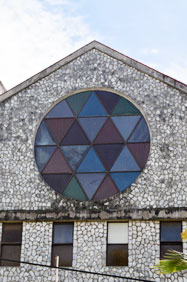 Paul Samuel Bloomfield arrived in 1869. Paul served as petty officer in the U.S. Navy during the final year of the Civil War, eventually seeking his fortune in the South Pacific. He settled in Fiji in 1866, before emigrating to Tonga in 1869. A year later, he married Sela Tulu Mo’unga, the granddaughter of US adventuress Elizabeth Morey.
Paul Samuel Bloomfield arrived in 1869. Paul served as petty officer in the U.S. Navy during the final year of the Civil War, eventually seeking his fortune in the South Pacific. He settled in Fiji in 1866, before emigrating to Tonga in 1869. A year later, he married Sela Tulu Mo’unga, the granddaughter of US adventuress Elizabeth Morey.
 Whilst in Tonga, Paul served as a cultivator of copra and banana, an informal banker, and later, judicial administrator at the U.K.’s High Commission of the Western Pacific and translator at Tonga’s Supreme Court, both in Nuku’alofa, Tonga’s capital.
Whilst in Tonga, Paul served as a cultivator of copra and banana, an informal banker, and later, judicial administrator at the U.K.’s High Commission of the Western Pacific and translator at Tonga’s Supreme Court, both in Nuku’alofa, Tonga’s capital.
He was quite prolific. According to one relative, there is hardly a village in Tonga without a descendant of Paul Samuel Bloomfield. Paul’s progeny have been active in various aspects of Tongan life, from politics, to sport.
Tevita Tuamoheloa Bloomfield played for the Tongan national rugby team in the 1970s and 80s. His biggest claim to fame is starting what has been called “the worst brawl ever seen on a rugby field” when he chased a Welsh player into the stands.
 Lionel Barnet Levin arrived in 1879. He was born in Bristol, and immigrated to Tonga at age 17, initially clerking for a German merchant firm in the Ha’apai chain before establishing his own trading company in Nuku’alofa in the early 1880s. He fathered two daughters out of wedlock. He was retained by HM King George Tupou II to import English furniture for the royal palace.
Lionel Barnet Levin arrived in 1879. He was born in Bristol, and immigrated to Tonga at age 17, initially clerking for a German merchant firm in the Ha’apai chain before establishing his own trading company in Nuku’alofa in the early 1880s. He fathered two daughters out of wedlock. He was retained by HM King George Tupou II to import English furniture for the royal palace.
Of the 27 founders of Tonga’s Royal Nuku’alofa Club in 1914, two were European Jews – Levin and Siegfried Seelenfreund from Poland. Siegfried Seelenfreund arrived in 1910. He had emigrated from Kraków to Tonga via Sydney in 1909. After interviewing at Burns Philp headquarters in Sydney, he sailed on to Tonga to manage the firm’s outpost in the Vaini district of Tongatapu. By 1916 he’d taken up with Helena Vika Tuaukilaumea, with whom he fathered three daughters over the next four years. But the death of Vika in childbirth in 1920 led him to leave his children with her Catholic parents and return to Kraków, where he resumed merchanting and soon married a Jewish woman from Berlin.
Evidence suggests, however, that he and his wife Malvine – like most Jews in Kraków – were trapped by the German occupation in 1939 and, by 1943, had either perished in the city’s improvised ghetto or been executed in Auschwitz. It is likely, then, that Siegfried, as a result of his atypical repatriation, was Polynesia’s sole Holocaust victim.